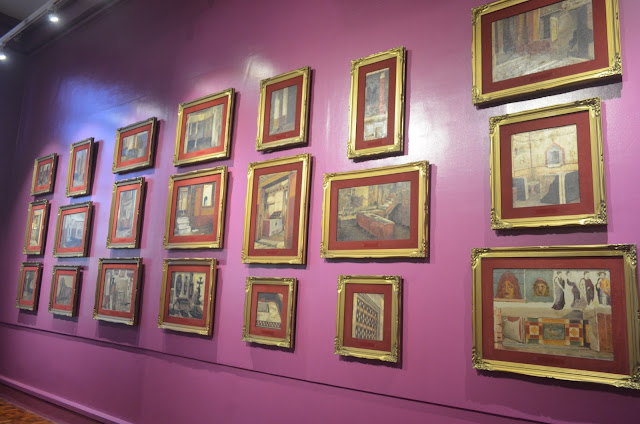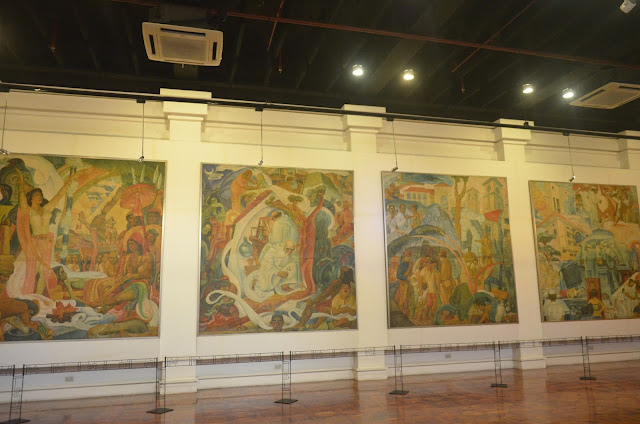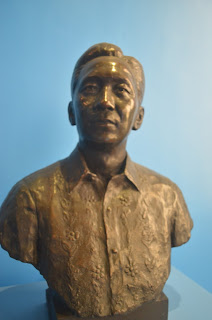 |
| Image Source: https://twitter.com/pwu_manila |
Greetings to all the women out there, because it's our special month- the month of March. A month-long celebration where women's contributions around the world to different societies were recognized and commemorated.
The first week of March every year is Women's Week, and March 8 is considered as the Women's Right and International Peace Day, also dubbed as the National Women's Day. So what are we waiting for? Let's go ladies! Let us celebrate and support the advocacy on women empowerment and gender equality...go girl power!
 |
| Image Source: http://pcw.gov.ph/sites/default/files/images/teasers/header_website.png |
This year's theme for the National Women's Month Celebration is "Kapakanan ni Juana, Isama sa Agenda!" (Include Women in the Agenda). I can say that this theme would probably give priority to the inclusion of women's rights and their important issues on various agenda, not only to different organizations but most especially, to the government of the Philippines.

 And for today, I just want to share with you how I celebrated the National Women's Month together with one of my girl friends :) We actually, visited again the National Museum and see for ourselves the art pieces made by one of our country's greatest National Artist, Benedicto Reyes Cabrera or commonly known as BenCab.
And for today, I just want to share with you how I celebrated the National Women's Month together with one of my girl friends :) We actually, visited again the National Museum and see for ourselves the art pieces made by one of our country's greatest National Artist, Benedicto Reyes Cabrera or commonly known as BenCab. We were really excited to see Bencab's "Sabel" and "Larawan" series exhibited in the National Museum, and since it's National Women's Month, all female visitors could enter the museum just for FREE from March 1-31, 2016. Yey! The perks of being a women :)
We were really excited to see Bencab's "Sabel" and "Larawan" series exhibited in the National Museum, and since it's National Women's Month, all female visitors could enter the museum just for FREE from March 1-31, 2016. Yey! The perks of being a women :)
Across the globe, women became remarkable in the involvement of making art. Some of them were creators, collectors, sources of inspiration, or whatever role they portray, women continues to become a significant contributor in this creative field. Many artists use different medium of art as a platform for advocating women's right and tackling various women's issues. For this exhibition, I've realized how women became a major inspiration to different artists, including BenCab.
According to BenCab during his message on the opening of his National Museum exhibition, BenCab: Appropriated Souls is his last exhibition of BenCab 50 Creative Years, the celebration of his artistic career during the last half-century. With this, National Museum was honored to showcase a retrospective exhibition of BenCab's Larawan and Sabel series.
Sabel Series
The Sabel series was actually inspired by a real-life female scavenger that BenCab saw when he was only a young man in their home in Bambang, Tondo. This woman who often wrapped herself up with plastic became BenCab's muse and one of his major subjects all throughout his career as a national artist. Here are some of BenCab's art pieces on the Sabel series that I find amazing!
 |
| Sabel in Motion (2010) Pigmented paper pulp on handmade STPI paper |
 |
| Portrait of Sabel, AP (1976) Two color plate etching aquatint |
 |
| Blue Sabel (2005) Acrylic on canvas |
 |
| Sabel (Outline) Undated Ink on paper |
 |
| Sabel (2015) Painted resin sculpture |
 |
| Variations on Sabel (I) (2010) Pigmented paper pulp on handmade STPI paper |
 |
| Sabel (2011) Acrylic on handmade paper |
 |
| Sabel (1999) Ink on paper |
Larawan Series
For the Larawan series, BenCab started it in 1972, from which he made it as a medium to show his feelings about what was happening during the martial law. According to him, he was showing parallelism between the past and the present with this series. So here are some of the art pieces of the Larawan series.
 |
 |
| Larawan (2015) Painted resin sculpture |
 |
| Ang Tao (1972) Acrylic on paper |
 |
| Yellow Scarf (2001) Acrylic on canvas |
 |
| Women with Winnowing basket (2002) Acrylic on canvas |
So there you go, the BenCab: Appropriated Souls. Better see it for yourself and be inspired with the art pieces exhibited in the National Museum of Fine Arts. I just want to end this with what BenCab have said during his opening message "life is short and art is eternal. The passage of time makes this truth ever more clear. Every line I draw and every stroke of the brush teach me that there is always more to learn."















































